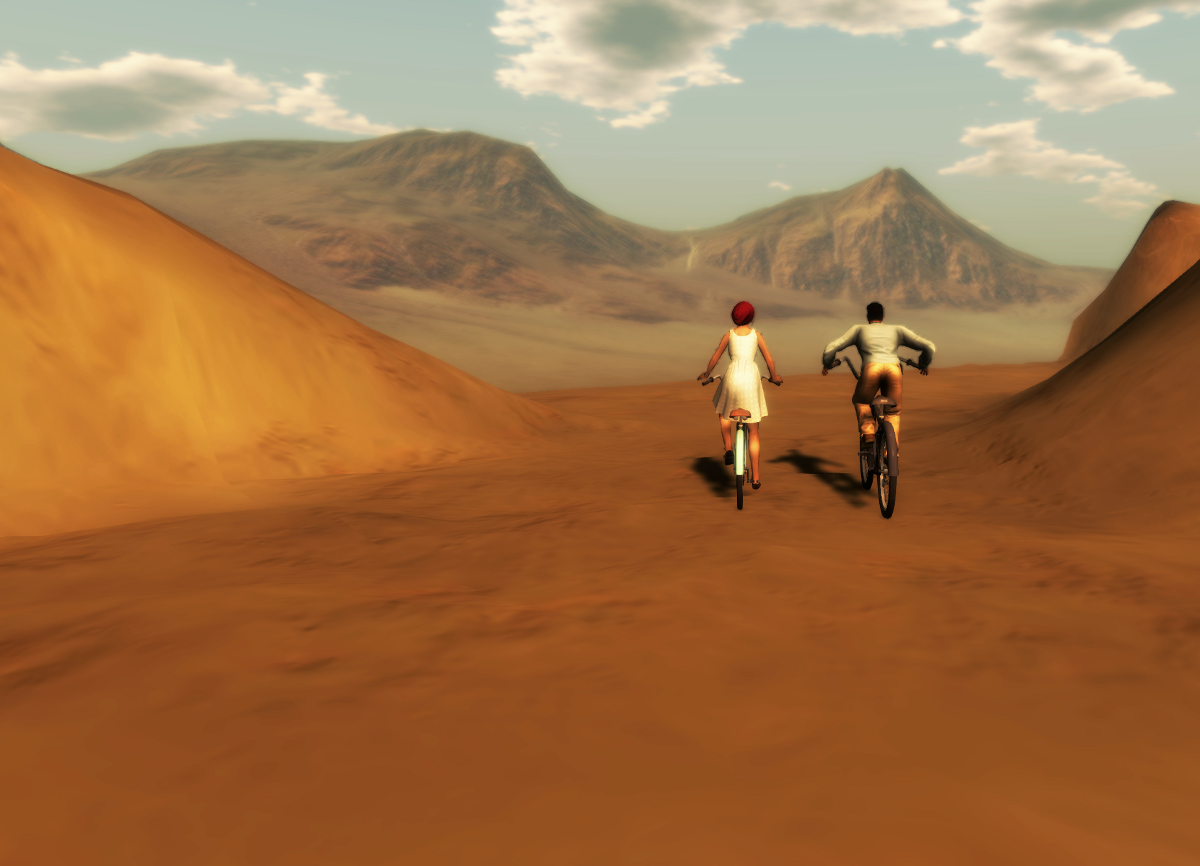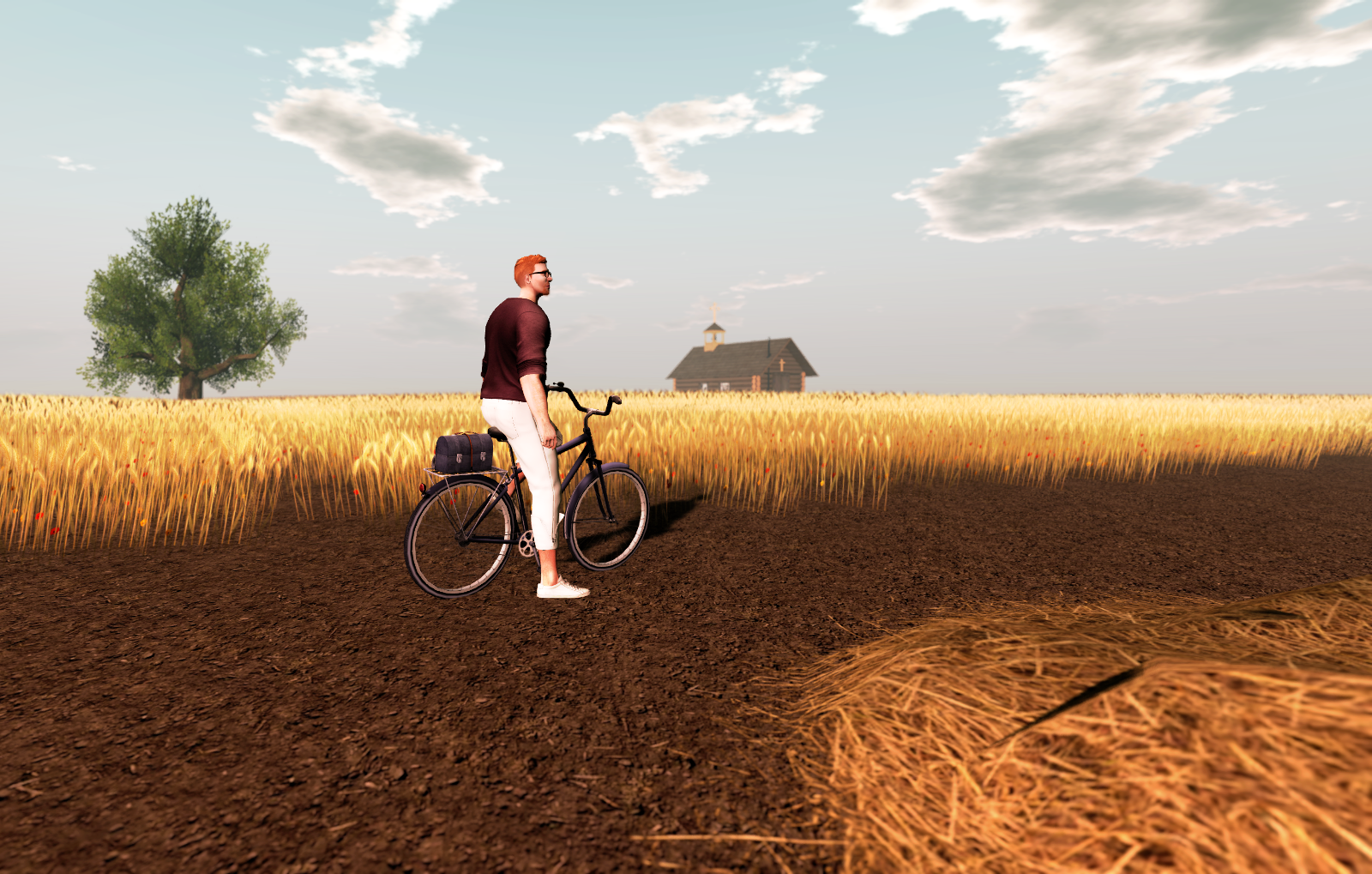I joined Second Life 10 years ago yesterday: on April 1st, 2007 – always as Ricco Saenz. Being 10 years old in SL means that I have seen a number of technical and cultural transformations there, and it is interesting to remember what has changed since I first rezzed on the grid. By thinking of that, it’s easier to put some things in perspective: from system hair to Bento Project, SL has never stopped evolving and even if it has lost many regions and active users – and it has – it’s still advancing. It’s not my intention to list all the transformations that residents have seen in a decade, nor to analyze them in depth – I’ll just let memory guide me and say some words about the most significant transformations that I can remember.

I was born in Second Life in the years of the hype. Back then, corporations like IBM, Cisco, American Apparel and many others were on the grid. Second Life was to be the next big thing in many different ways, from gaming to business. Of course, the hype showed that the platform had a number of problems associated with usability and scalability, and in a couple of years most of those brands would leave (and with them, the irritating ad farms that one could find back then in Mainland would disappear as well). But those years also gave Second Life a significant user base that allowed it keep going for years after those times of big success.
When I first logged in, system hair was abundant. It is still there, but hidden. Sometimes I find some 5 or 6-year-old residents who have never seen it or who have never been aware of its existence. When I show it to them, their reaction reminds me of an episode of my atomic existence. Once, in the so-called real life, I saw a boy marveled and surprised at a typewriter: wow, how does it work, what if you make a mistake, and if you need to check google before writing a sentence? That’s more or less how younger residents (in SL terms) react to their first contact with system hair. Isn’t it great?
From system hair and layer clothes, I saw the rise and fall of sculpted prims in the fashion industry and the dissemination of mesh. Sculpts and mesh items also revolutionized the building system and transformed it from basically an in-world activity into a practice that requires a certain amount of time in Blender, Maya or other software – i.e. somewhere else than SL. In some cases, with its positive and negative consequences, major creators spend considerably less time on the grid and are required to have much more specific abilities than in the past.

On the cultural side, mesh clothes, with its “standard sizes”, and mesh bodies, generally intended to be god-like or goddess-like ones, probably made human avatars less diverse than before. On the other hand, mesh developments also made animal and hybrid avs more detailed. I frankly don’t know what the impact of mesh is for tines though.
I’ve also seen the developments involving the constant complaints about how expensive a full sim is in Second Life. The debate peaked with the Open Spaces controversy. I have really seen friends migrating to other SL-technology based grids after that, and a handful of them would never come back. For those who don’t know about it, at some point Linden Lab decided to sell a new kind of land, called Open Space, intended for a very light use, such as providing navigable waters or a forest adjacent to a full sim. But on the technical aspect, there was not much limitation. So, people started acquiring it for other purposes. When it was clear that the original idea was being ignored by many, LL announced an expressive rise in the prices and tiers for those regions. Of course, everyone protested, from those who built carnivals in their Open Spaces (to use the words of former CEO M Linden) to those who did keep a light usage. As a consequence, the Lab compromised, lowering prices again but limiting prim and avatar capacity in Open Spaces, and introducing Homestead sims. Later, mesh would reduce the land impact of objects and, more recently, LL increased the prim capacity of sims. With all that, it’s impressive how items can now accumulate in Homesteads as never before, allowing people to decorate such sims in a very detailed way.
As for Linden Lab’s CEOs, I’ve seen all of them: Philip Rosedale (a.k.a. Philip Linden), Mark D. Kingdon (M Linden), Rod Humble (Rodvik Linden) and Ebbe Altberg (Ebbe Linden). For many, their achievements have been very disputable, but I have to say I feel happy to see that, under Ebbe, many important developments have been put forward, including the new Bento skeleton, that gave birth to more adaptable attached mesh items and made it possible for avatars to have animated fingers or tails – or even to benefit from a super responsive attachable riding horse.
I have seen other technical changes and their consequences: Windlight, that transformed both the in-world experience and SL photography; the deployment of Mono, which made scripts run faster and reduced lag; Viewer 2, rejected by almost everyone (sometimes I think I was the only creature who used to like it) and replaced by Viewer 3; Pathfinding and Experience Keys, that not only improved the gaming side of SL, but also caused our second life to feel more real. And there were many other actions behind the curtains.

A number of cherished sims disappeared; new, impressive ones were built. Teen grid merged with the main one – and, to be honest, would it make sense to have a teen grid today? I mean, I don’t see, these days, many teens talking about SL. Back in the hype era, everyone knew about Second Life, but now, it wouldn’t surprise me if one asked around and realized that, in general, youngsters have never heard of it.
There are some delicious stories about SL, such as the tweaks and bug exploits that allowed residents to create megaprims and spread them throughout the grid. The first megaprims had arrived before I joined SL, but the second wave came when the client was open-sourced. I don’t know if the second wave started right before or after I joined, I knew nothing about megaprims back then, but I remember having heard of them very often in 2007.
Of course, there were some dark moments, too. I remember having seriously thought that maybe Second Life wasn’t for me when I saw the disaster with Ginko Financial. Ginko used to offer high interest rates for investments in Linden dollars – but no one knew where its resources would come from. If I remember it well, when Linden Lab decided to act against online gambling, people rushed to get their money out of Ginko, for rumors, true or false, that the institution actually depended on virtual casinos. Obviously, it could not pay everyone and most customers simply lost their savings. Since then, organizations like that are forbidden in SL. I had never had anything to do Ginko, I wasn’t one of their customers, but the whole story just scared me.
The sad episode of Ginko Financial has something in common with the massive presence of RL brands in Second Life and with one of the most famous stories about SL, the one of its first millionaire, who made the news on mainstream US media: the point is that, in 2007, a large number of residents were interested in the virtual world as a way to make money, lots of money – and the faster, the better. Nonetheless, it’s not that easy for everyone to profit so much in SL. For the majority of us, being there just means to commit to some expenditures: buying goods, paying tiers, which is more or less what we do when we hire services that provide us some fun, such as a movie streaming website or a certain online game that has to finance itself to stay in business. I am in SL because it gives me a good time, because I’ve met, and keep meeting, some great people on the grid, because I have developed an intense relationship with someone there to the point of calling him my husband, because I feel marveled at the possibilities of the virtual world, because I still see its potential and its positive reality.
To conclude, at my rez day party yesterday, while talking about how SL changed along these 10 years, I remembered that there was a time when people would keep rezzing giant flying penises in dance clubs. I have to say it: I’m glad those days are over. After all, who the hell decided it was funny to do that? LOL!
Now, let me keep riding my bicycle and exploring the grid. See you!


Thanks for sharing a wonderful post. Yes, we have seen a lot happen in Second Life over the years. I had hoped to get to the party. Congrats and Happy Rez Day my friend. 🙂 My 9th Rez Day comes up an May.
Thank you, Rocky! And, yay, another rez day coming!
Reblogged this on thomas mcgreevy and commented:
A man and his bicycle…
Thank you Ricco for a great post. It brought back many happy memories. I joined on 7 April 2007 – a week after you, and have had many of the same experiences along with many of us SL “baby boomers”. I am still enjoying exploring and having new experiences in SL. Long may you do too.
Hi, Natsuki, thank you! Unfortunately, I could not answer before (if you read this post you will understand why). It’s interesting to hear from someone about the same age as me in SL. Maybe we could exchange notes sometime. 🙂
You have a very readable writing style (:
Thank you, that’s really kind of you! And your comment just led me to your blog, which is very interesting, I love the photos and the text pills. Of course I didn’t start from the beginning, lol, but it may also be interesting to read it backwards, going to each preceding part only after reading the one that temporarily follows it. Actually, it may surprise the reader and make them re-signify what they’ve just read. I’m adding your blog to my blogroll.